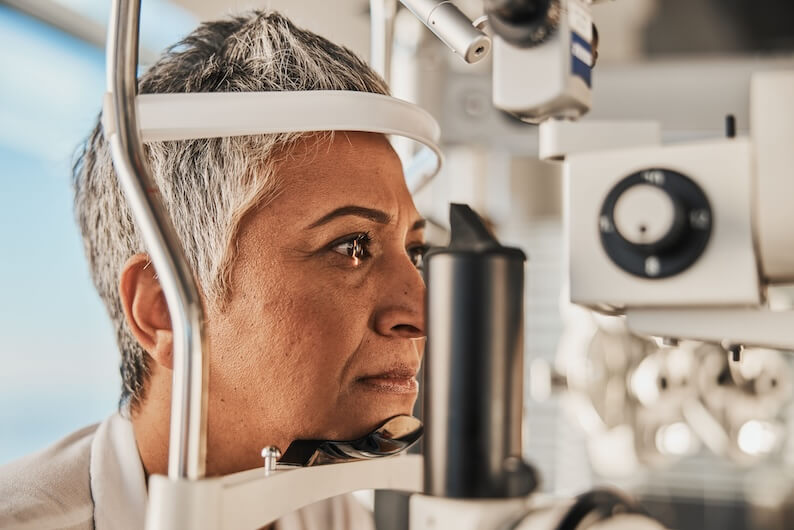Eyes are often called the windows to the soul, but they can also be windows to your health. Beyond their function of sight, eyes can reveal a range of health conditions, from common ailments to serious systemic diseases. This article delves into various symptoms and what your eyes might reveal about your overall health.
Yellowing of the Eyes (Jaundice)
Indication: Liver Disease Yellowing of the whites of the eyes, known as jaundice, occurs when there is a buildup of bilirubin in the blood. Bilirubin is a yellow pigment produced during the normal breakdown of red blood cells. Conditions that can cause jaundice include:
- Hepatitis: An inflammation of the liver often caused by viral infections.
- Cirrhosis: Chronic liver damage leading to scarring and liver failure.
- Gallstones: These can block the bile ducts, leading to a buildup of bilirubin.
- Hemolytic Anemia: A condition where red blood cells are destroyed faster than they can be produced.
Bulging Eyes (Proptosis or Exophthalmos)
Indication: Thyroid Disease Proptosis or exophthalmos refers to the abnormal protrusion of one or both eyes. The most common cause is Graves' disease, an autoimmune disorder that affects the thyroid gland and causes hyperthyroidism. Other symptoms of Graves' disease include weight loss, tremors, and an increased heart rate.
Blurred Vision
Indication: Various Conditions Blurred vision can result from numerous health issues, including:
- Diabetes: High blood sugar levels can lead to diabetic retinopathy, a condition where blood vessels in the retina are damaged.
- Hypertension: High blood pressure can cause hypertensive retinopathy, leading to vision problems.
- Stroke: Sudden blurred vision can be a sign of a stroke, especially if accompanied by other symptoms like weakness on one side of the body.
- Multiple Sclerosis: This neurological disease can cause optic neuritis, an inflammation of the optic nerve that leads to blurred vision.
Dry Eyes
Indication: Sjögren's Syndrome or Environmental Factors Dry eyes can result from reduced tear production or increased tear evaporation. Common causes include:
- Sjögren's Syndrome: An autoimmune disorder that attacks glands producing tears and saliva.
- Medications: Some drugs, like antihistamines and antidepressants, can reduce tear production.
- Environmental Factors: Prolonged exposure to wind, smoke, or screens can exacerbate dry eyes.
Red or Bloodshot Eyes
Indication: Infections, Allergies, or Trauma Red or bloodshot eyes can be a sign of several conditions:
- Conjunctivitis (Pink Eye): An infection or inflammation of the conjunctiva, often caused by viruses, bacteria, or allergens.
- Allergies: Pollen, dust, or pet dander can cause redness and irritation.
- Trauma or Foreign Objects: Injury or foreign particles can lead to redness and discomfort.
Eye Floaters
Indication: Retinal Detachment or Diabetes Floaters are tiny specks or strands that drift into your field of vision. While often harmless, they can sometimes indicate more serious conditions:
- Retinal Detachment: If accompanied by flashes of light, it could signify retinal detachment, a serious condition requiring immediate medical attention.
- Diabetic Retinopathy: Diabetes can cause changes in the vitreous, the gel-like substance inside the eye, leading to floaters.
Night Blindness
Indication: Vitamin A Deficiency or Genetic Disorders Difficulty seeing in low light or at night, known as night blindness, can be due to:
- Vitamin A Deficiency: Essential for maintaining healthy vision, a deficiency can lead to night blindness.
- Retinitis Pigmentosa: A genetic disorder that affects the retina and can lead to progressive vision loss.
Pupil Abnormalities
Indication: Neurological Disorders Changes in pupil size or reactions can be indicative of neurological issues:
- Anisocoria: Unequal pupil sizes, which can be a harmless condition or a sign of nerve damage or other neurological problems.
- Horner's Syndrome: Characterized by a smaller pupil, drooping eyelid, and lack of sweating on one side of the face, indicating possible nerve damage.
Swollen Eyelids
Indication: Infections or Allergies Swelling of the eyelids can be due to:
- Blepharitis: Inflammation of the eyelid margins, often caused by bacterial infections or skin conditions like dandruff.
- Chalazion or Stye: Blocked oil glands can lead to these lumps, causing swelling and discomfort.
- Allergic Reactions: Allergies to pollen, dust, or makeup can cause swollen eyelids.
Changes in Eye Color
Indication: Wilson's Disease or Aging While gradual changes in eye color are often harmless, sudden changes can be a concern:
- Wilson's Disease: A rare genetic disorder causing copper accumulation in tissues, leading to a brown ring around the cornea (Kayser-Fleischer ring).
- Aging: Over time, the iris can accumulate pigment, slightly altering eye color.
Safeguard Your Vision and Overall Health
The eyes are complex organs that do more than allow us to see; they can also serve as indicators of various health conditions. Your eyes reveal a lot about your overall health, making regular eye examinations crucial. Not just for maintaining good vision but also for early detection of potential health issues. If you notice any changes in your eyes or vision, it is essential to consult a healthcare professional for a thorough evaluation. By paying attention to what your eyes are telling you, you can take proactive steps to safeguard your overall health.




